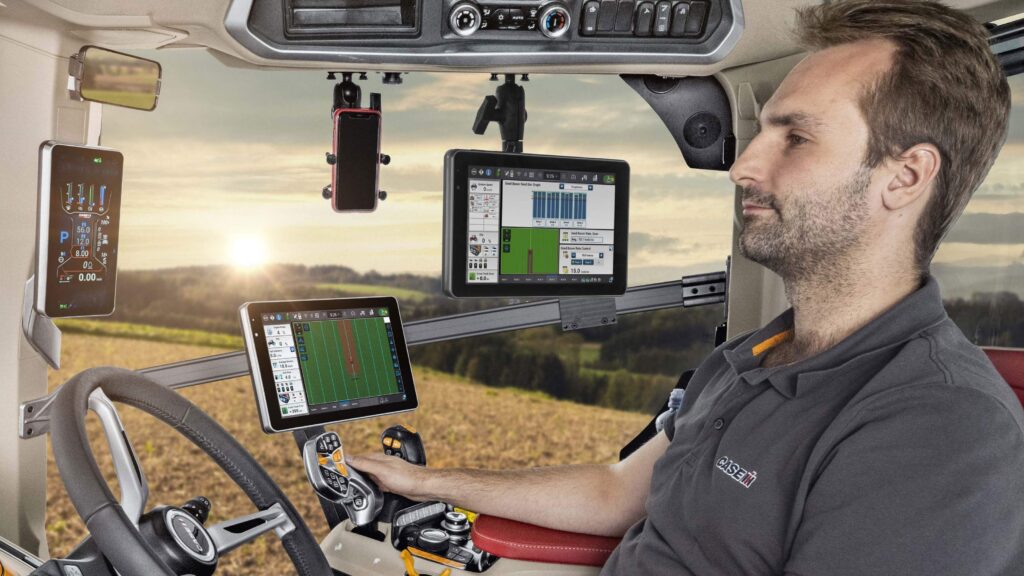High-speed machinery isobus system under development
 High-speed isobus is being developed to handle more complex digital farming systems and applications © Case
High-speed isobus is being developed to handle more complex digital farming systems and applications © Case Agricultural engineers from across the industry are collaborating to future-proof key digital resources increasingly used by farmers and contractors around the world.
A new isobus system, with the speed and capacity to handle more data, is under development, and the proposed AgIN Cloud computing network for agriculture would make it easier for farmers to upload, analyse and store data.
See also: Drill rebuild gives grower isobus-ready Vaderstad for sub-£10k
Commenting on the Cloud computing initiative, Norbert Schlingmann, general manager at the Agricultural Industry Electronics Foundation (AEF), said:
“The agricultural industry has struggled to make it easy for farmers to transition to a digital world, which has slowed the adoption of digital technology on a global level.
“The AEF’s AgIN initiative will provide the framework to foster collaboration between members, partners and related initiatives, enabling peer-to-peer connections and creating an industry-wide solution.”
Limited capacity
The AEF recognises that, some 20 years on since isobus became available commercially, the current system lacks capacity relative to the scale and complexity of future machines and the ever-more sophisticated functions that manufacturers have in mind.
In an explanation of the issue published on its website, the AEF says the main constraint is the canbus technology used, which has a data transfer rate of 250KB/sec and a maximum wiring harness length (from the front-most ecu to the rear-most) of 40m.
Large and complex systems may already experience “can” data traffic well beyond 50% of bus capacity and often near 100%, says the AEF, resulting in latencies (delays) to the point that the precision of a prescription or the performance of automation is compromised, along with the user experience.
While vowing to continue supporting isobus in its present form for many years to come, the industry is now working towards a high-speed version with an ethernet-based architecture and 1,000MB/sec data transfer rate – about 4,000 times faster than today’s canbus system.
This would substantially increase the responsiveness, control capabilities, precision and capacity to manage data across existing and future applications.
Specifying the new system has presented numerous challenges, from assessing the suitability of current hardware such as cables and connectors for harsh agricultural environments to imagining the increasingly complex future functions the system might be expected to handle.
In particular, the high-speed isobus project team drawn from the AEF’s 300 or so member companies is engaged with AEF teams working on camera systems and wireless in-field communications to understand the performance and other requirements of digital services and applications likely to be offered on tractors, harvesters and other machines in future.

